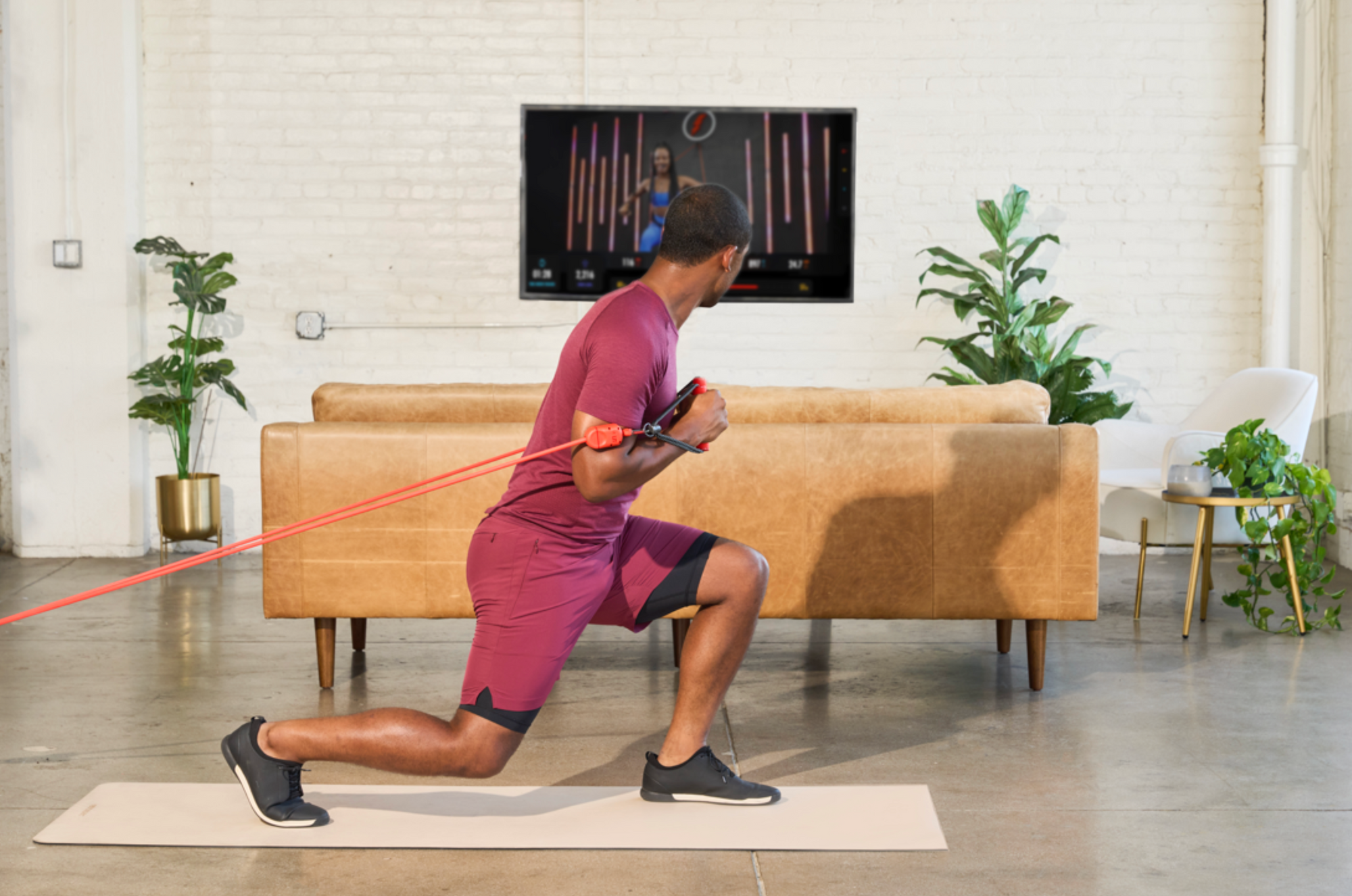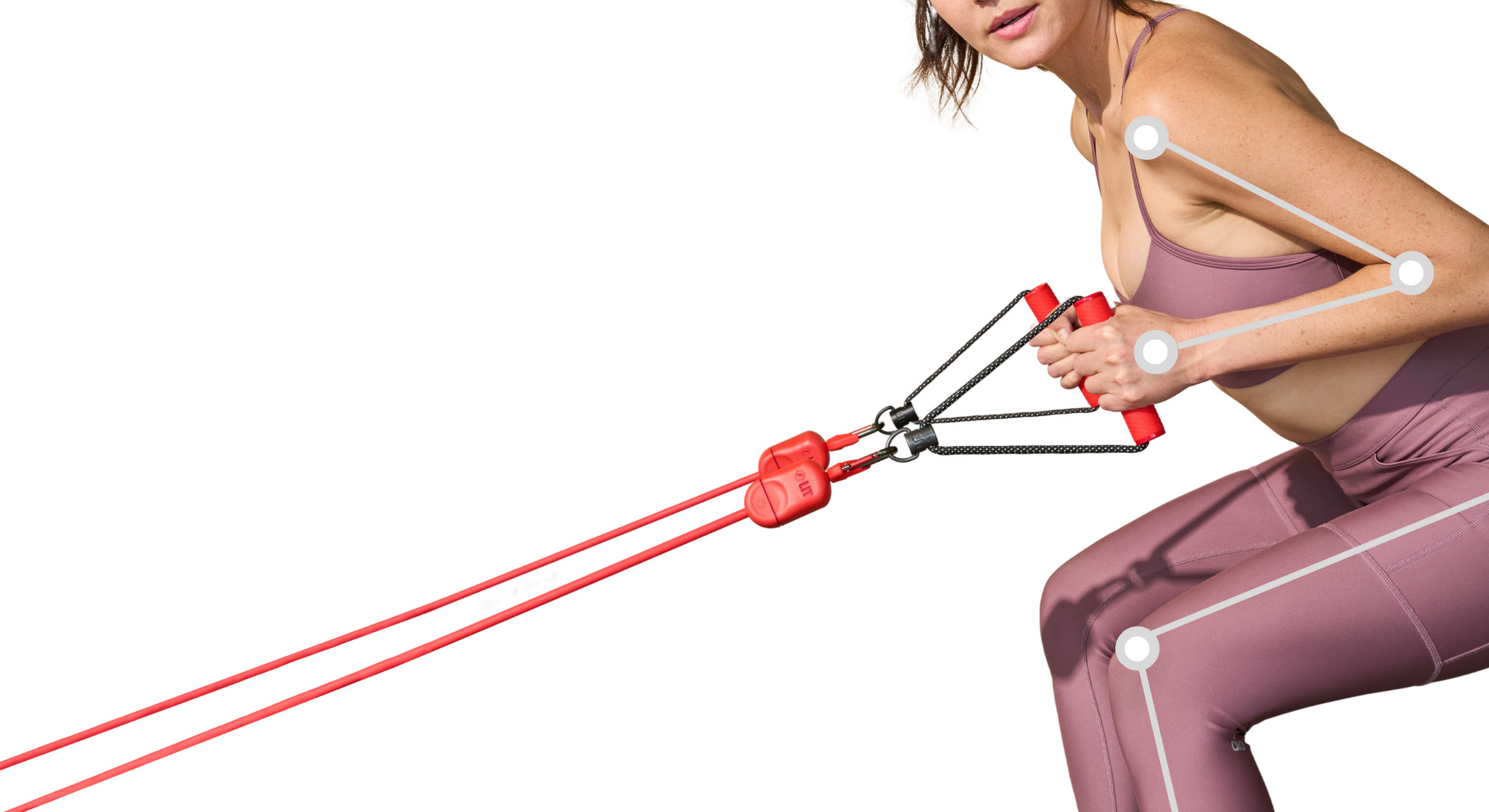Resistance bands are a great addition to any workout. These lightweight, versatile, and highly stretchable bands can add resistance to make training much more efficient. When you combine resistance bands with Pilates, you can do a full-body workout that's much more efficient than mat Pilates.
Pilates involves repetitive exercises traditionally performed on a yoga mat or using a Pilates reformer for improved core strength, stability, and flexibility. Pilates helps the body develop strength and structure through muscular efforts by cultivating everyday movements. Resistance band Pilates workouts not only improve the outcome of Pilates but also support the actions to make it easier.
We will share resistance band Pilates exercises that offer core-strengthening benefits and improve posture and balance. But, before that, let's look at some benefits of using resistance bands for Pilates.
Benefits of resistance band Pilates workout
Pilates workouts using equipment can put pressure on the joints. Also, it is challenging to target small and large muscle groups at once. With Pilates band exercises, you can easily assist the movements reducing the pressure on joints. Resistance band movements can simultaneously engage small and large muscle groups, making Pilates more efficient.
Ranging from light to heavy, bands offer different levels of resistance that you can use to make your Pilates movements challenging progressively. Mat Pilates workout plateaus after a certain point, but Pilates with bands can be more challenging, ensuring continued muscle building, power, and endurance improvement.
Pilates band workout is beneficial for total body strength training. Especially, you can micro-target glutes and legs because resistance bands force you to move with better form during Pilates exercises. It generates power from the correct muscles, such as controlled Pilates band exercises can target and strengthen the muscles around the joint so that they can bear a heavier load.
Furthermore, resistance bands are great for all, from beginners to advanced. Pilates can be difficult for beginners, and extra support from bands help them improve their form. Someone advanced can quickly increase the resistance of the Pilates movements using bands to make the workout more efficient.
The external feedback body gets from using the resistance bands for Pilates help activate specific muscles to adjust and improve the stance to get the most out of the exercise. For example, if you let your knees cave in during squats, using resistance bands will remind your body to drive your knees out.
An excellent resistance band Pilates workout successfully targets the whole body. Check out these Pilates band exercises to strengthen and tone your core, legs, and arms.
Resistance band Pilates exercises for core, upper and lower body
Pilates band exercises for the core
1. Resistance Band Crunches

- Lie on your back straight and loop the resistance band around your feet.
- Lift your legs and bend your knees 90 degrees, keeping ankles parallel to the ground.
- Stretch the band with the edges of your feet to maintain tension in the band.
- Support your head with your arms and slowly lift the shoulders off the ground. Keep your upper and lower back firmly sticking to the mat.
- Lower your back down and repeat the move keeping the core engaged and feet pressing into the band.
- Maintain your breathing-exhale when you lift and inhale when you lower your shoulders.
2. Band Bicycle Variation

- Lie down on your back and loop the band around your feet so it goes over your instep.
- Lift your shoulder, resting your torso on the elbows and keeping your forearms flat on the mat.
- Pull up your legs bent at 90 degrees while maintaining the tension in the band.
- Lengthen your left leg stretching out the band.
- Bring your left leg back to a 90-degree position and stretch the right leg out.
- Keep the alternating motion going for 25 reps.
- Keep your elbows straight to keep your lower abdominals engaged.
3. Ball Bicycle Crunches

- Lie on your back with the band around your feet so it goes under your arch during movement.
- Bend your right knee at 90 degrees and keep the left leg straight out.
- Rotate your left shoulder towards your right knee. The movement will lift your upper back off the ground.
- Reverse the motion by bending your left knee and lengthening the right leg.
- Rotate the right shoulder to your left knee.
- Repeat the left and right movements ten times on each side.
Pilates band exercises for legs
1. Front squat

- Stand on the band with your fit shoulder-width apart.
- Hold the ends of the resistance band with your hands and bring them near your chest.
- Lower into a squat keeping your abs firm, chest high, and feet firmly grounded.
- Rise to the starting position.
- Repeat for 12 reps.
2. Straight Side Leg Lift

- Lie on the mat on your right side, keeping your legs straight.
- Put your right hand underneath your head as a support.
- Loop the resistance band around your ankles and stretch your legs straight and stacked.
- Gradually lift your left leg, squeezing your butt. Keep the leg straight, lift it as high as you can, and stop before your back starts arching.
- Slowly return to the starting position lowering your leg.
- Repeat ten times before switching sides.
3. Standing Abduction

- Wrap the resistance band at ankle height and your legs hip-width apart.
- Lift the right leg off the ground, slowly moving it to the side, pointing forward. Make sure to lead with your heels to engage the glute muscles.
- Lower back to the starting position.
- Repeat for 20 reps before changing sides.
If you cannot stand firmly and wobble, take support from the wall or the back of a chair.
Pilates for arms using resistance bands
1. Bicep Pulses

- Stand on your knees, but you can also stand on your feet if you feel discomfort.
- Loop the resistance band around the biceps, and bend your elbows 90 degrees with palms facing each other.
- Widen your arms stretching the resistance band in a controlled motion, then bring them back to the starting position.
- Keep elbows bent at 90 degrees throughout the movement.
- Repeat the motion for 20 reps for an added burn.
2. Triceps Flutters with Squat

- Stand on the mat with feet hip-width apart.
- Put both arms straight behind your back. Loop the resistance band around the palms.
- Sit back into a squat, bending your knees gradually.
- While squatting, reach your arms as high as you can and keep the arms pushing against the band.
- As you stand upright, bring your arms to a resting position behind your glutes.
- Repeat for 20 reps. For an additional stretch, you can pulse the arms up and down.
3. Seated Lawn Mower Rotation

- Sit on the mat keeping your feet flat on the ground.
- Loop one end of the resistance band on your right foot and hold the other end firmly with your right hand.
- Lift your right leg, bringing your foot perpendicular to the ground.
- Pull the band with your right arm bending your elbow and keeping the motion at your side.
- As you pull the band out, rotate your torso and shoulders to the right in sync.
- Rotate back as you bring your arm back in front of you.
- Repeat the movement ten times before switching to the left side.
Resistance band Pilates workout routine
How do you get started with a Pilates band workout? Here is a sample mat Pilates with resistance bands workout suitable for anyone.
Beginners should do 8-12 reps for 2 to 3 rounds; if you are an intermediate or advanced person, do 15-20 reps for three rounds.
Stretching
Before you can start with Pilates band exercises, you need to warm up. Pilates imprinting is an excellent stretch workout to awaken each muscle in your body.
- Lie on your back straight, put your feet firmly on the mat, and allow your spine to be neutral.
- Relax your shoulders, jaw, throat, rib cage, belly, spine, hips, and leg muscles sequentially as you inhale through your nose and slowly exhale from your mouth.
- For 3-5 breaths, relax the muscles and focus on lengthening, stretching, and relaxing your spine.
- Start with a front squat for 2-3 sets, followed by a straight side leg lift and standing abduction for the same number of sets.
- Relax for 30 seconds.
- Do two sets of resistance band crunches, two sets of band bicycle variation, and three sets of ball bicycle crunches.
- Relax for 30 seconds.
- Do three sets of each bicep pulse, and triceps flutters with squat and seated mower rotation.
Common mistakes to avoid
Just as with any other gym equipment, there are some considerations when you use resistance bands for Pilates.
Here are the most common mistakes to avoid.
✔ The most common mistake anyone can make is not to maintain the correct amount of tension in the band. If the band slacks, you will have no resistance against your muscles. This is why you must keep the right pressure to work out muscles through the end. Also, overstretching must be avoided to prevent tearing or breaking the band.
✔ Using the same resistance for the whole body workout is another common mistake. Every muscle in your body has a different strength, so they require a varying level of resistance for improvement in strength. If you use the same band, the results will be suboptimal.
✔ Choosing the incorrect resistance band for Pilates is another damaging mistake that can render your resistance band Pilates exercises ineffective. If there is too much resistance in the band, you risk bad form and injury. If the resistance is too little, there is not enough stimulus for muscles to grow.
LIT AXIS Smart Pilates Resistance Band System
LIT Method has created the LIT AXIS smart Pilates resistance band system to overcome the challenges above.
~[[lit-axis-cherry]]

Conclusion
Pilates using resistance bands is a fantastic workout that adds versatility and challenge to your routine. Not only affordable and more portable than free weights, but resistance bands are also safer and highly effective at targeting most muscle groups.
With resistance band Pilates exercises, you can utilize an exercise's entire range of motion to recruit more muscles, including smaller stabilizer muscles.





